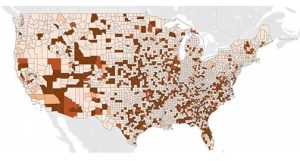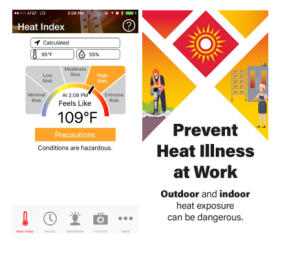Hazard Alert: OSHA Steps Up Enforcement As Extreme Heat Endangers Workers Across the Nation
Posted: October 31st, 2023
Authors: Corey P.
On July 27, 2023, President Biden requested the Department of Labor (DOL)’s Occupational Health and Safety Administration (OSHA) to issue a first-ever Hazard Alert for heat. This Hazard Alert reminded employers of their responsibility to protect workers from heat, to reaffirm worker rights, and to note upcoming federal enforcement actions.
Hazard Alert for heat explains how workers can notify OSHA of safety violations and details whistleblower protections. It includes resources and OSHA current/future actions on heat-related issues, including compliance assistance.
The alert is one of two measures the Biden administration is taking to help combat heat-related issues in the workplace. The other is increased inspections in high-risk industries such as construction and agriculture.
Background
In October of 2021, OSHA began heat-specific workplace rulemaking by publishing the document, Advance Notice of Proposed Rulemaking for Heat Injury and Illness Prevention in Outdoor and Indoor Work Settings in the Federal Register. During the comment period, over 1,000 comments were received, which OSHA is reviewing prior to publishing any draft rules.
According to the hazard alert issued on July 27, employers should also:
- Give new or returning employees a chance to gradually acclimatize to high-heat conditions, provide training and plan for emergencies, and monitor for signs/symptoms of heat-related illness.
- Train employees on heat-related illness prevention, signs of heat-related illness, and how to act if they or another employee appears to be experiencing a heat-related illness.
In accordance with OSHA’s regulation at 29 CFR Part 1904, employers with more than 10 employees in most industries are required to keep records of occupational injuries and illnesses that occur in the workplace, including injuries and illnesses caused by heat exposure.
Resources
- As detailed in ALL4’s recent 4 The Record article, heat exposure in the workplace during the summer months can lead to serious injuries or even death. To increase awareness about heat illnesses and injuries, the Department of Health and Human Services recently published an interactive EMS HeatTracker map on the National EMS Information System (NEMSIS) website in partnership with the National Highway Traffic Safety Administration. It displays heat-related EMS activations at national, state and county levels and breaks down patient data by age, race, gender and location. This tool can be used to identify regions that are more prone to such illnesses.
- OSHA, in partnership with the National Oceanic and Atmospheric Administration (NOAA) recently published an infographic reminding workers to drink a cup of cool water every 20 minutes, take rest breaks in the shade or another cool location, and to know the sings of heat illness.
- The OSHA-NIOSH Heat Safety Tool is a useful resource for planning outdoor work activities based on how hot it feels throughout the day. It has a real-time heat index and hourly forecasts specific to your location. It provides occupational safety and health recommendations from OSHA and NIOSH. The tool also allows workers and supervisors to calculate the heat index for their worksite, and, based on the heat index, displays a risk level to outdoor workers. Then, with a simple “click,” you can get reminders about the protective measures that should be taken at that risk level to protect workers from heat-related illness-reminders about drinking enough fluids, scheduling rest breaks, planning for and knowing what to do in an emergency, adjusting work operations, gradually building up the workload for new workers, training on heat illness signs and symptoms, and monitoring each other for signs and symptoms of heat-related illness.
- HEAT.gov lists a variety of tools and websites that can be used to educate and prevent against heat related illnesses and injuries.
Next Steps
The best ways companies can continue to prevent heat-related illnesses or injuries include developing a written Heat Illness Prevention Plan, providing training to appropriate facility personnel, and implementing good heat safety practices as described in the OSHA-NIOSH Heat Safety Tool.
ALL4 will continue to monitor as OSHA and the Biden Administration promulgates workplace and heat injury and illness-related regulations. ALL4 has experience in assisting clients with developing OSHA program plans and assisting in implementation of those plans. ALL4 can partner with you to develop strategies for maintaining compliance as new regulations develop. If you would like to discuss your project or have any questions, please reach out to your ALL4 Project Manager or to Corey Prigent at cprigent@all4inc.com.



